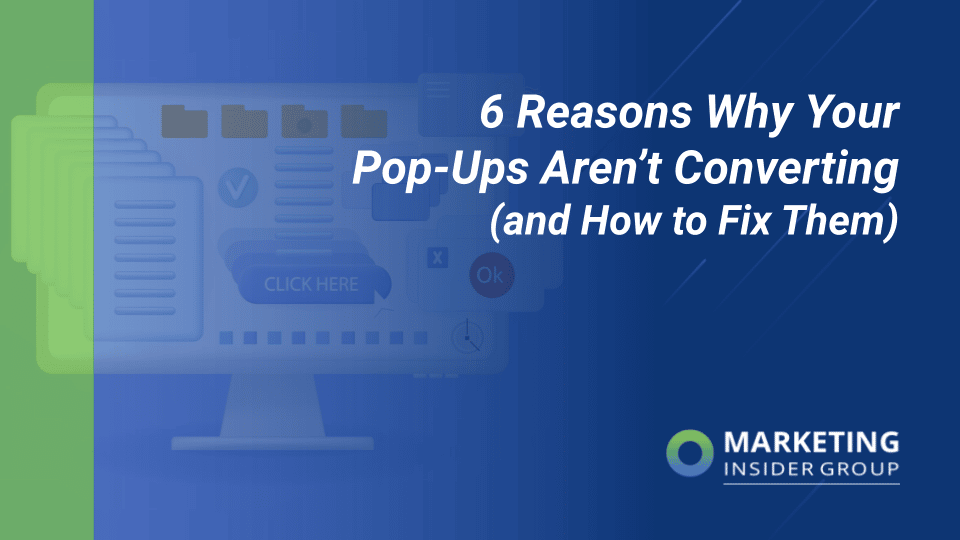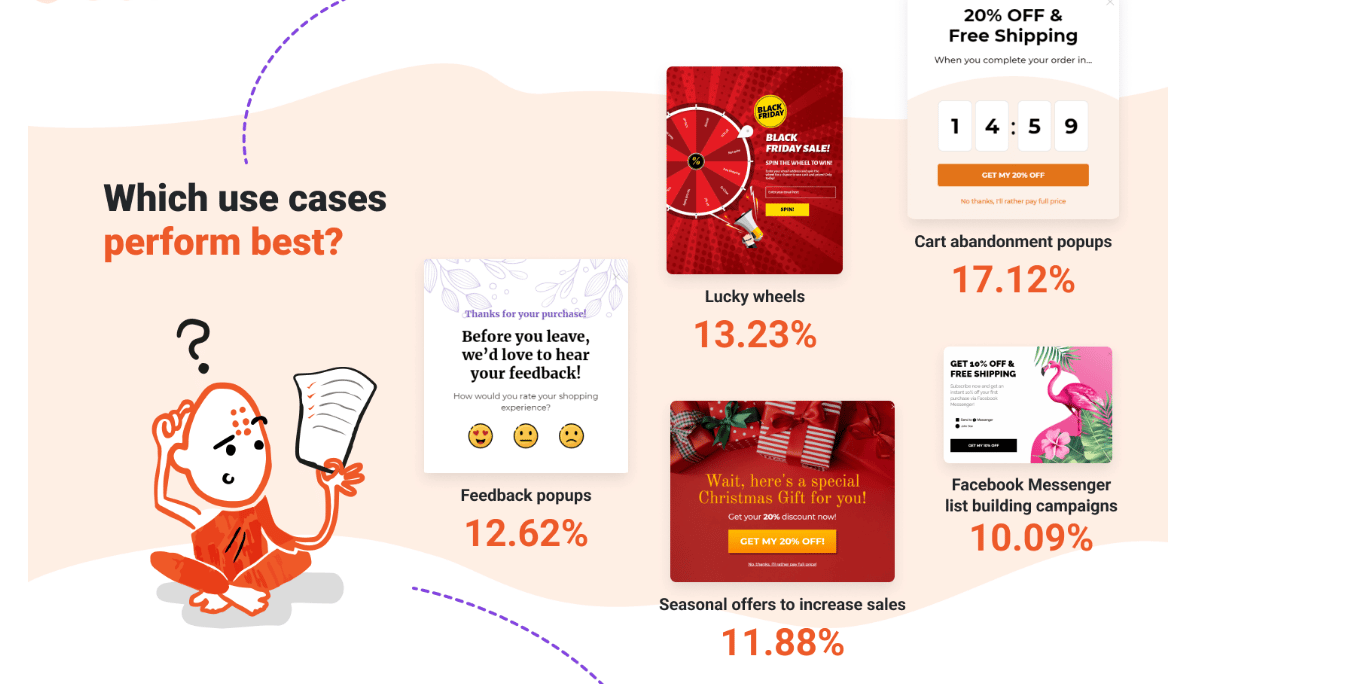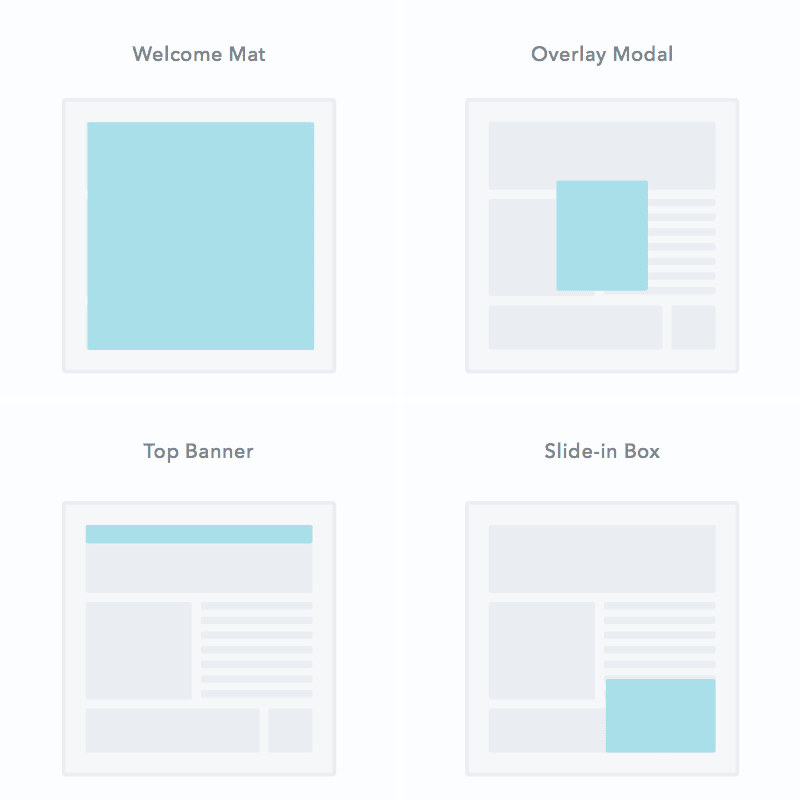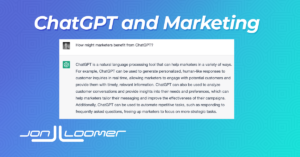
The title of this post was generated by the ChatGPT bot.
If you’re a marketer, you’ve surely heard the recent noise about ChatGPT. If you haven’t, it’s time to pay attention.
ChatGPT is the biggest tech development we’ve seen in a long, long time. It has the potential to be enormously disruptive. Similar technology could change how you work, how you use the internet, how you learn, and even whether your current occupation is necessary.
The possibilities could lead to some very good and potentially very bad results, depending on how it’s used.
That is not hyperbole. This isn’t just another shiny object with more flash than substance.
There are many angles we could take with this post. Truthfully, I’m still trying to fully understand the technology. While ChatGPT could impact our lives in multiple ways, the focus of this post is on marketers.
Let’s start there…
What is ChatGPT?
First, the obvious. Let’s understand what this is.
ChatGPT is a chatbot built on artificial intelligence. I know that when I write that, you immediately think of the annoying chatbots that need rules and often generate more frustration than value. That’s not what we’re talking about here.
ChatGPT is… Well… How about we just ask ChatGPT?
You can ask ChatGPT a question. It doesn’t matter what format the question is in. The bot is very good at understanding language, adjusting based on your directions, and providing a conversational and thorough answer.
If you don’t like the answer, you could ask it to try again. Or provide more details about what it is you’re looking for. The bot continues a conversation, it doesn’t just answer single prompts. And the answers can be different every time.
Currently, the answers you get are driven by the data that has been fed into it. ChatGPT aggregates information to give us an answer.
That said, it doesn’t currently have access to the internet to look up answers and it won’t know anything about current events. Here’s what happens…
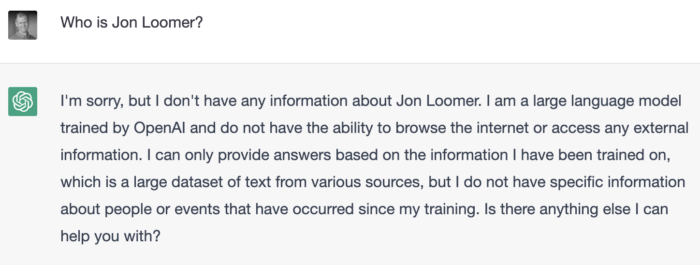
You can, however, add a Chrome extension that allows it to access the Internet. It’s a bit hit and miss, but you may have more success with that extension on.
It’s also been developed to respond to appropriate language (I tried swearing at it, and it didn’t like it). It won’t help you break the law and it should avoid controversy generally.
Fun Uses of ChatGPT
You’re limited by your imagination. I asked it to help me write a thoughtful holiday letter to my wife to express my gratitude.
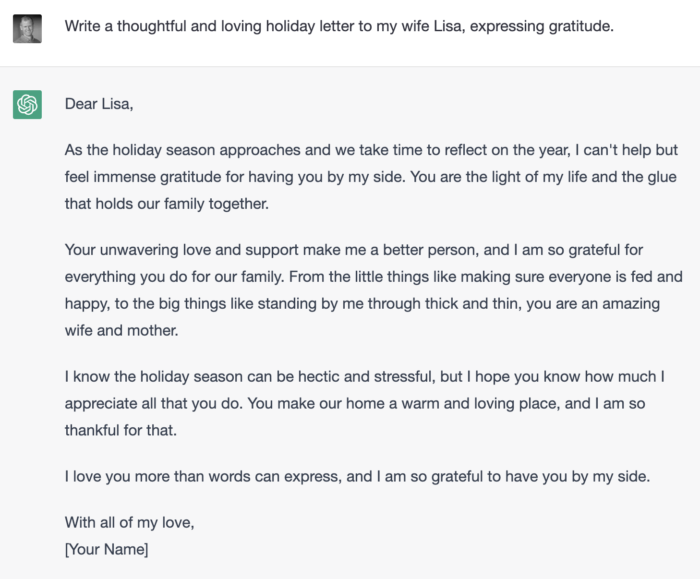
This is impressive! I won’t use it, though, I promise.
I had it tell me a joke about Facebook advertisers.
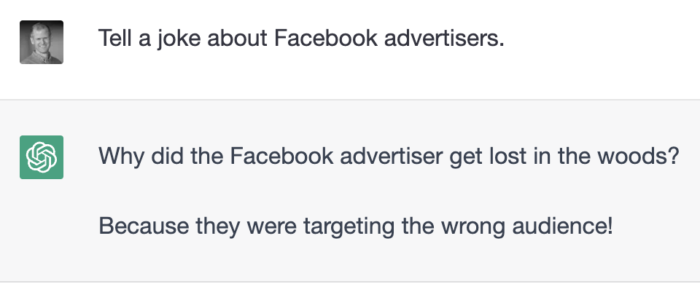
Yeah, not funny. Let’s have it try again.

I had it write a song about being a member of the Power Hitters Club. I made sure that it mentioned dragons, for no good reason.
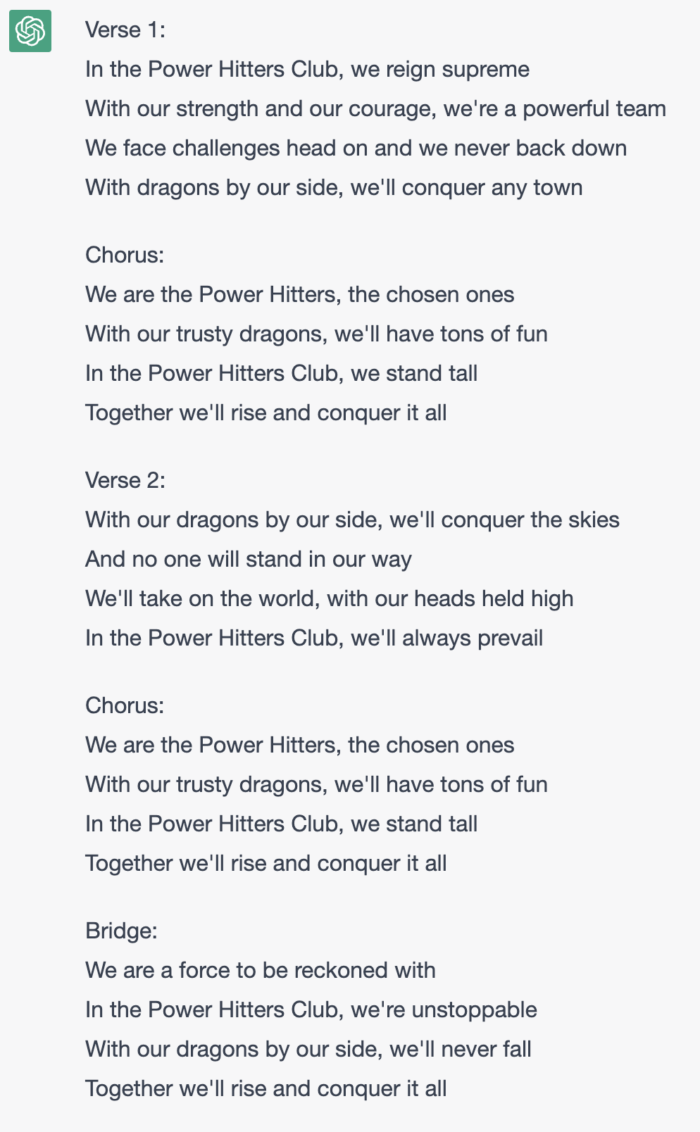
The song is so long that I can’t even display it all here.
You get the point. You can get it to do some hilarious, amazing things.
But What About Marketers?
Let’s ask ChatGPT how it might be able to help marketers.
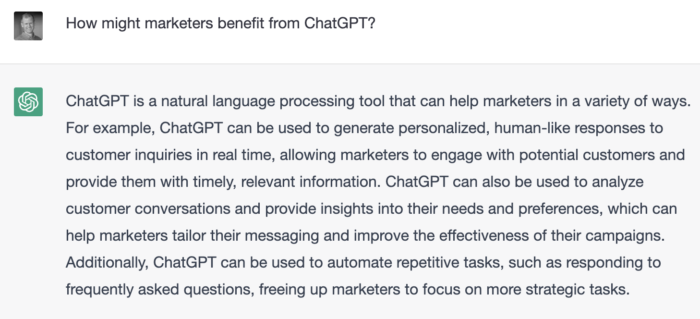
Customer support is a big one. Imagine a bot that doesn’t require you to follow a specific path and use only certain words. Presumably, it would get fed information from your website (or whatever data you want to give it) to answer customer questions.
It’s also good for generating ideas. Let’s ask for Facebook advertisers’ biggest challenges.
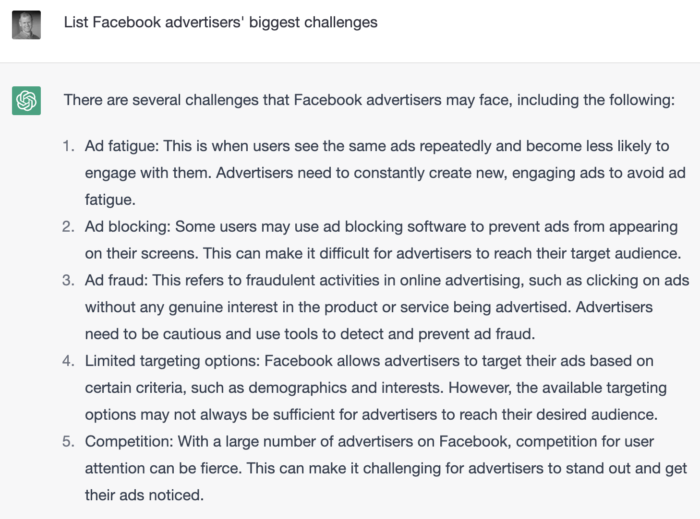
I mean, dang. You can’t argue with that.
Let’s have ChatGPT generate three potential blog titles based on the content of this article. My question is this…
Generate three blog post ideas based on this content:
I then pasted in the content of this post. Here’s what we get…

As someone who doesn’t pride himself on title writing, that’s pretty good!
While we’re at it, let’s have it generate a meta description.

I’m not going to use that, but you get the point. I could have it try again until I get a description that I like — or it inspires the idea that I wanted.
I’ve also asked it for ideas regarding what to write about.
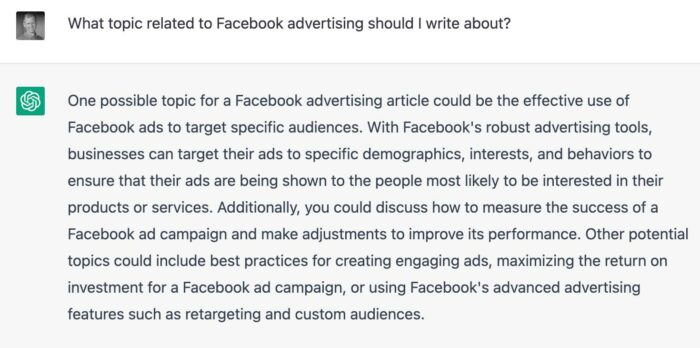
And check out this answer when I asked for podcast guest ideas.
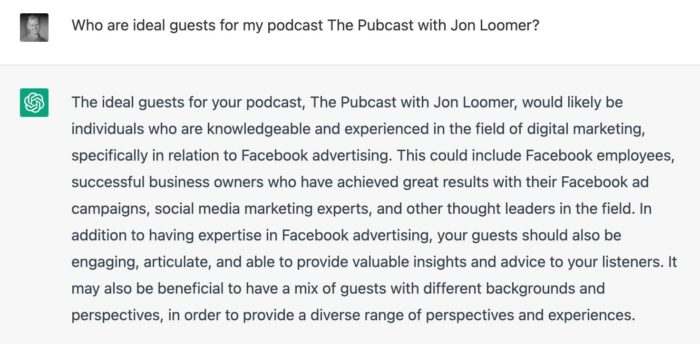
That is pretty freaking amazing.
The Scary Stuff
It’s normal to immediately think of how this could be used for really bad stuff.
Students could have it write papers for them. Presumably, we’ll need tools that can automatically detect content that was written by bots (I’ve heard that this exists).
Want to start a marketing business? Build a website written entirely by a bot. You suddenly know what you’re talking about — or it seems that you do.
You could see how this type of technology, as it develops and improves, could impact copywriters and info-marketers. I know that the counterargument will be that content written by humans will be better, but will that always be the case? AI is getting better.
It’s also easy to see a form of this replacing Google Search (assuming Google isn’t creating its own version). If it becomes easier to get immediate access to the answer to your question, why go to another website? Could it destroy search referrals? Will an answer based on an aggregation of information provide all of the sources that contributed to that answer?
I won’t even get into all of the science fiction (turned potential reality) regarding AI owning AI and how it could get out of hand. This is way over my pay grade, but it sounds bad.
How to Approach This
Look, we’ve been heading this direction for years. It kinda snuck up on us (or at least those of us who weren’t paying close attention), and life is likely going to change pretty quickly.
The main thing is not to run from it. Instead of thinking about how this may eliminate our jobs, think about powerful ways that we can leverage this technology to make us better at those jobs.
If you’re going to resist this and hope it goes away, you’re likely in trouble. Prepare for it. Think about the ways you can leverage it. Consider how the ways that you provide value might change, but focus on the positive ways that will be the case.
A Couple of Resources
I am far from an expert on this topic. I just started learning about it myself.
Here are two articles that may help you better understand ChatGPT and how it might be used. They helped me.
- 13 Ideas for using Open AI ChatGPT in PPC
- Unlocking the power of the ChatGPT revolution: 100 innovative use-cases to try before you are fired
Your Turn
What do you think about ChatGPT? In what ways might you use it?
Let me know in the comments below!
The post The Potential Impact of ChatGPT on the Future of Marketing and Advertising appeared first on Jon Loomer Digital.

